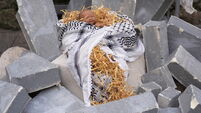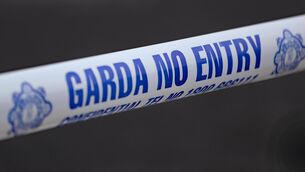Tyndall National Institute radiation monitor bound for space

Taoiseach Enda Kenny made the announcement yesterday during a visit to the European Space Research and Technology Centre as part of an Enterprise Ireland trade mission to the Netherlands and Germany.
Previous radiation detectors have only revealed how much exposure an astronaut has received after their return to Earth.
However, a team of European researchers has developed a wearable system which can measure radiation in real-time and instantly warn astronauts of increased and dangerous levels.
It is to be deployed permanently on the ISS in June.
The breakthrough system, part of which has been recently tested on the ISS, is the result of a European Space Agency (ESA) sponsored collaborative project involving the Tyndall National Institute in Cork, and space research labs in Germany, Finland, and Austria.
Tyndall’s Dr Aleksandar Jaksic, who led the Irish team, said the key breakthrough was the development of a monitor which can measure astronauts’ exposure to radiation in real-time.
“Until now, if a catastrophic radiation event happens, like a solar flare, they will not know about it in time to protect themselves and hide in more shielded modules of the ISS,” he said.
“But this device, which can be worn in a pocket, shows the radiation levels in real time and can alarm astronauts if the dose goes above a certain threshold.
“In addition, it enables a time-resolved personal radiation record for each astronaut.”
The system consists of a phone-sized mobile unit which is worn in a pouch on an astronaut’s body, and a personal storage device, which serves as a docking station to recharge the mobile unit, download data and transmit it back to Earth.
The mobile unit, which was launched into space on board the Soyuz spacecraft, has returned to Earth after testing on the ISS.
Dr Jaksic’s team worked with Tyndall’s semiconductor fabrication plant to develop, fabricate, and supply three of the four specialised radiation sensors for the mobile unit part of the system. Each sensor covers a different type/spectrum of radiation.
“It was a big leap for us, and a challenging project,” Dr Jaksic said. “This is the most comprehensive system ever developed for personal radiation dosimetry.
“Flying a device into space is a crowning achievement. It was an exotic project and technically challenging. It was great to be involved.”
It is the latest development arising out of Tyndall’s links with the European Space Agency (ESA). Tyndall has, since 2009, been contracted as a microelectronics technology support lab to ESTEC, ESA’s research and test centre in the Netherlands.
Last month, Tyndall announced that it had developed a robust ‘radiation hard’ transistor which will improve the reliance of space probe computer systems. It is hoped this next-generation transistor could play a key role in ESA’s planned mission to Jupiter in 2022.
Enterprise Ireland CEO, Julie Sinnamon, said they will continue to help Irish companies bid for ESA contracts.









